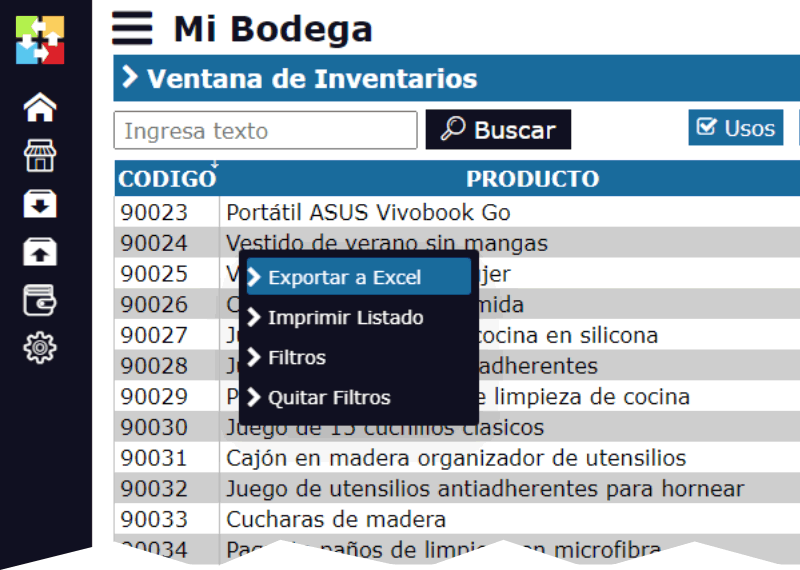Neural Networks for Predicting Inventory Stock
Can you imagine being able to anticipate how many product units you will need in inventory next week or even next month? With current technologies, this is possible thanks to the use of neural networks and deep learning algorithms. These systems can analyze historical sales data to predict the ideal stock and thus avoid overbuying and product shortages in the warehouse.
How does inventory prediction work?
Neural networks are artificial intelligence models inspired by the functioning of the human brain. They are used to process large volumes of data and detect complex patterns that would be difficult to identify with traditional methods. In particular, LSTM (Long Short-Term Memory) and GRU (Gated Recurrent Unit) networks are used to work with time series, such as daily sales data for products.
The process begins with the collection of historical sales data for each product you want to predict. Imagine, for example, that you have a list of daily sales for the last two years for a specific product. These data are converted into a time series, which is ideal for feeding a recurrent neural network (RNN) such as LSTM or GRU.

Creating the neural network with Python and Keras
The next step is to set up the neural network using a programming environment such as Python and a deep learning library such as Keras. Keras provides a simple way to create complex neural networks, thanks to its intuitive syntax and its ability to integrate with TensorFlow, a highly optimized machine learning framework.
For an inventory prediction model, the network architecture could look like this:
Input layers: The network needs to understand the relationships of historical sales data. The first layer would be an LSTM or GRU layer, which can retain relevant information from previous days to make an informed prediction.
Hidden layers: Depending on the complexity of the problem, additional LSTM or GRU layers can be added, adjusting the number of neurons and applying techniques such as dropout to avoid overfitting.
Output layer: Here, the expected sales value for the next day, week, or month would be defined, depending on the business requirements.
The model is trained using historical data, adjusting the internal weights of the network to minimize prediction error. After some iterations (epochs), the network should be able to generate reasonably accurate predictions.
A basic implementation example in Keras:
1 2 3 4 5 6 7 8 9 10 11 12 13 14 15 16 17 18 19 20 21 22 23 24 25 26 27 28 29 30 31 32 33 34 35 36 37 38 39 40 41 42 43 | import numpy as np import tensorflow as tf from tensorflow.keras.models import Sequential from tensorflow.keras.layers import LSTM, Dense, Dropout # Assume we have a dataset of daily sales in a numpy array # For simplicity, we use fictitious data daily_sales = np.array([30, 40, 35, 50, 60, 55, 65, 70, 75, 80, 85, 90]) # Normalize the data from sklearn.preprocessing import MinMaxScaler scaler = MinMaxScaler(feature_range=(0, 1)) normalized_sales = scaler.fit_transform(daily_sales.reshape(-1, 1)) # Create training sequences def create_sequences(data, steps=3): X, y = [], [] for i in range(len(data) - steps): X.append(data[i : i + steps]) y.append(data[i + steps]) return np.array(X), np.array(y) X, y = create_sequences(normalized_sales) # Reshape X to be compatible with LSTM X = np.reshape(X, (X.shape[0], X.shape[1], 1)) # Create the LSTM model model = Sequential() model.add(LSTM(units=50, return_sequences=True, input_shape=(X.shape[1], 1))) model.add(Dropout(0.2)) model.add(LSTM(units=50)) model.add(Dropout(0.2)) model.add(Dense(units=1)) # Compile and train the model model.compile(optimizer="adam", loss="mean_squared_error") model.fit(X, y, epochs=50, batch_size=32) # Make predictions predictions = model.predict(X) |
What benefits does stock prediction bring?
With a prediction system based on neural networks, you can:
Optimize purchases: By knowing in advance the amount of product that will be required, you can avoid overbuying that immobilizes capital and shortages that could affect sales.
Minimize waste: An accurate prediction allows you to buy just what is needed, reducing obsolete or perishable products that do not sell in time.
Adapt to demand: The prediction is not only based on historical data. It can also incorporate external variables such as sales seasons, marketing campaigns, or changes in market trends.
Conclusion
Implementing a stock prediction solution using neural networks may seem complicated, but with the right tools and structure, it is an achievable task. Whether you sell in a small business or in a global environment with online stores and multiple warehouses, artificial intelligence is here to help you make informed decisions and optimize your inventory resources.





